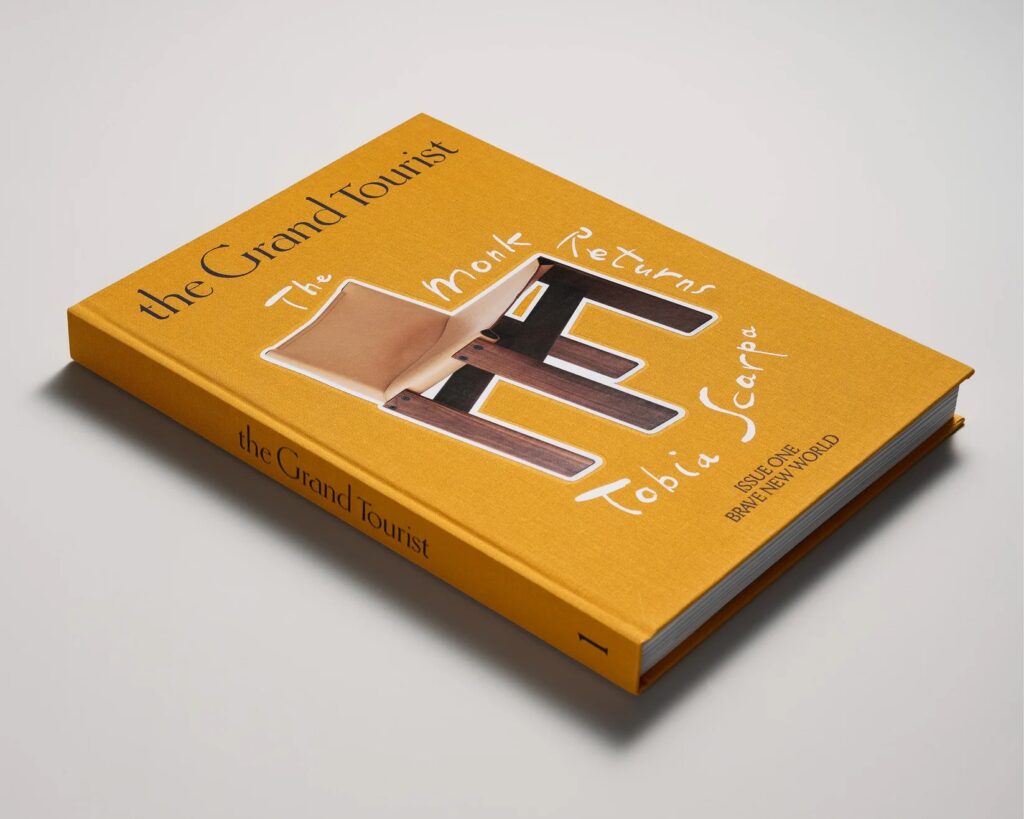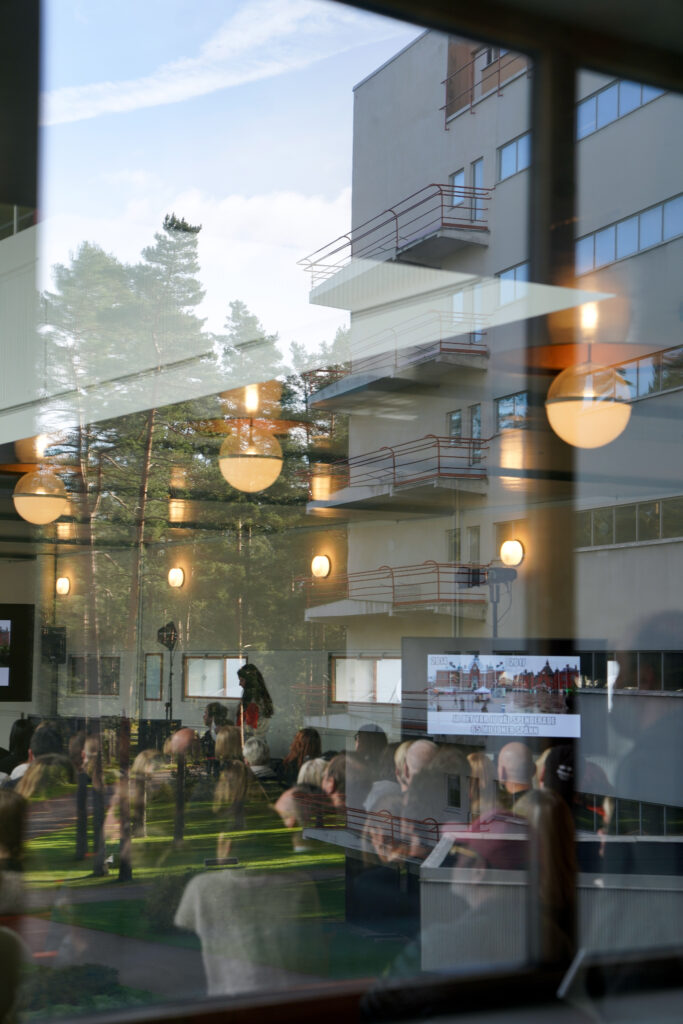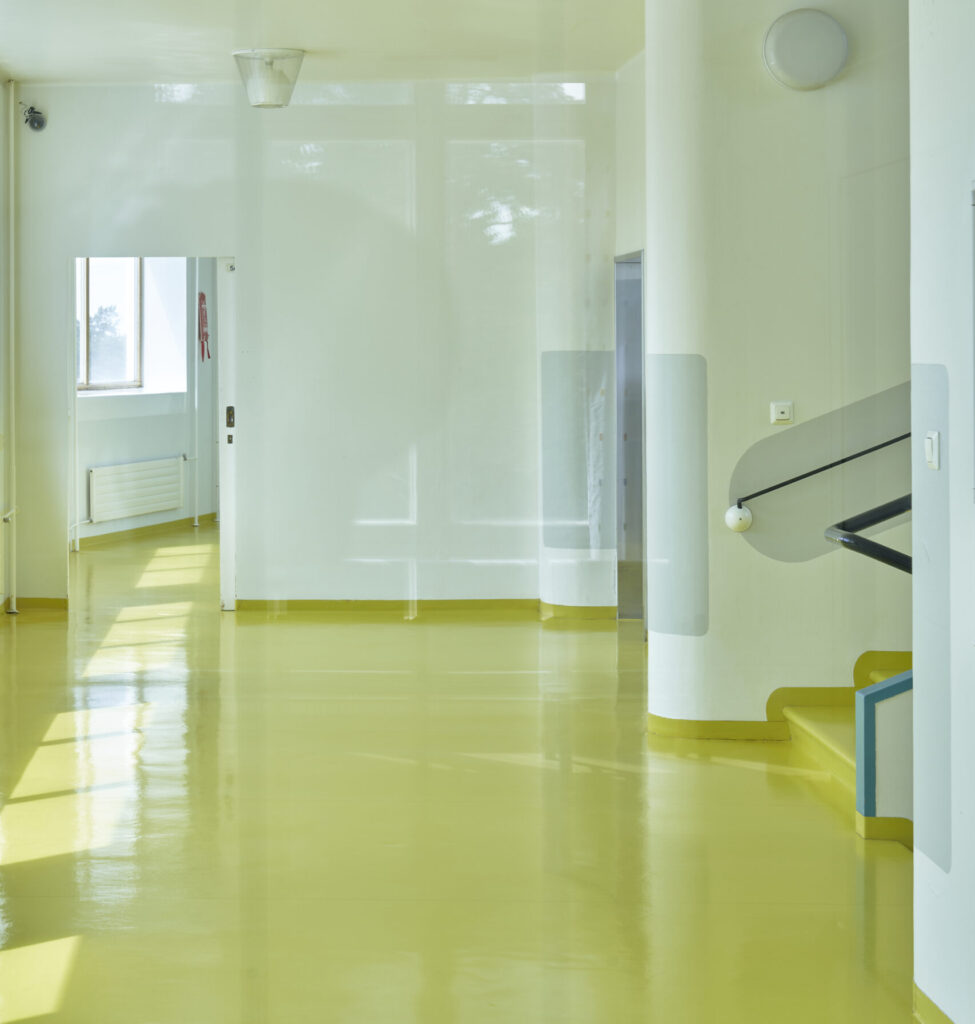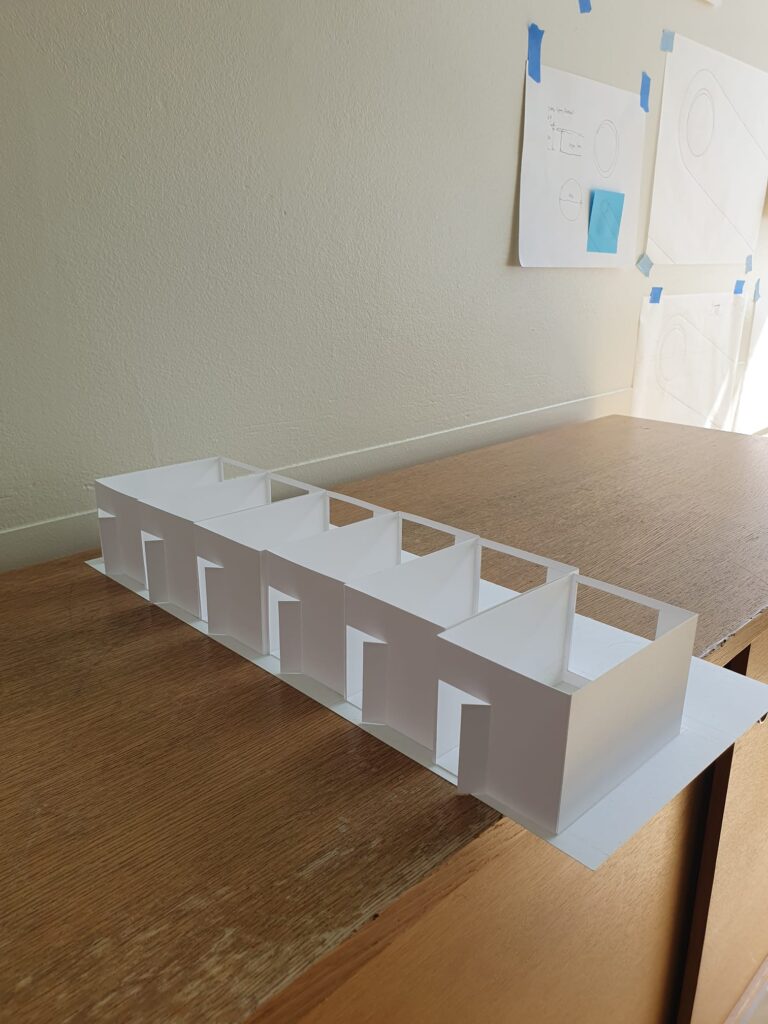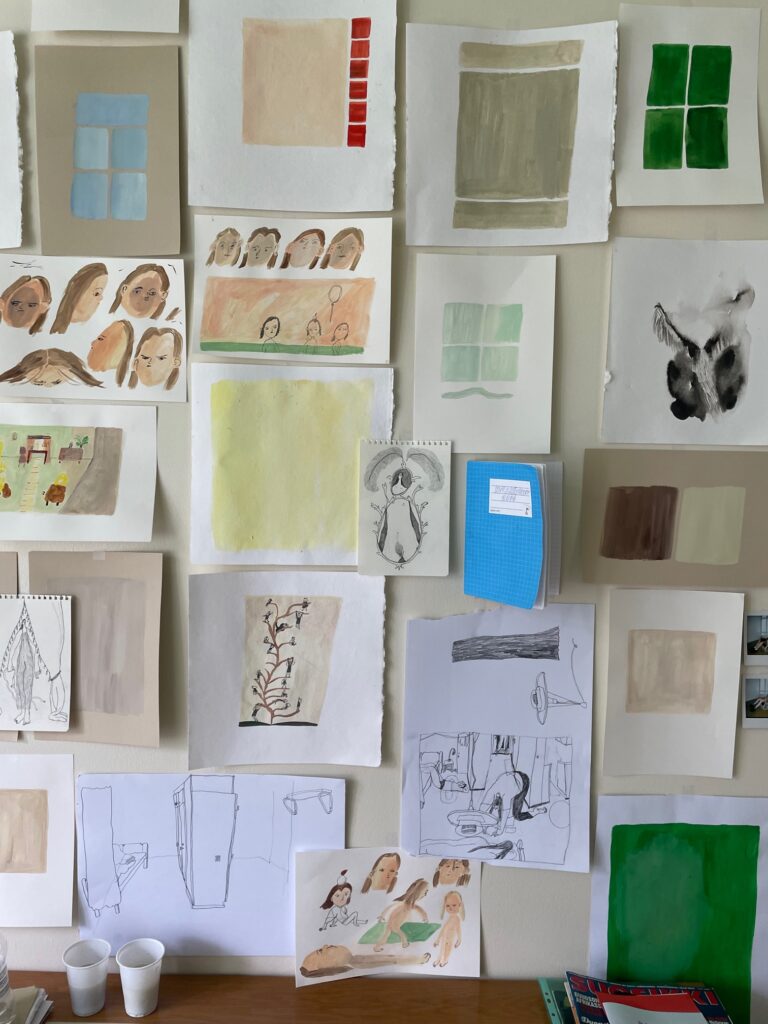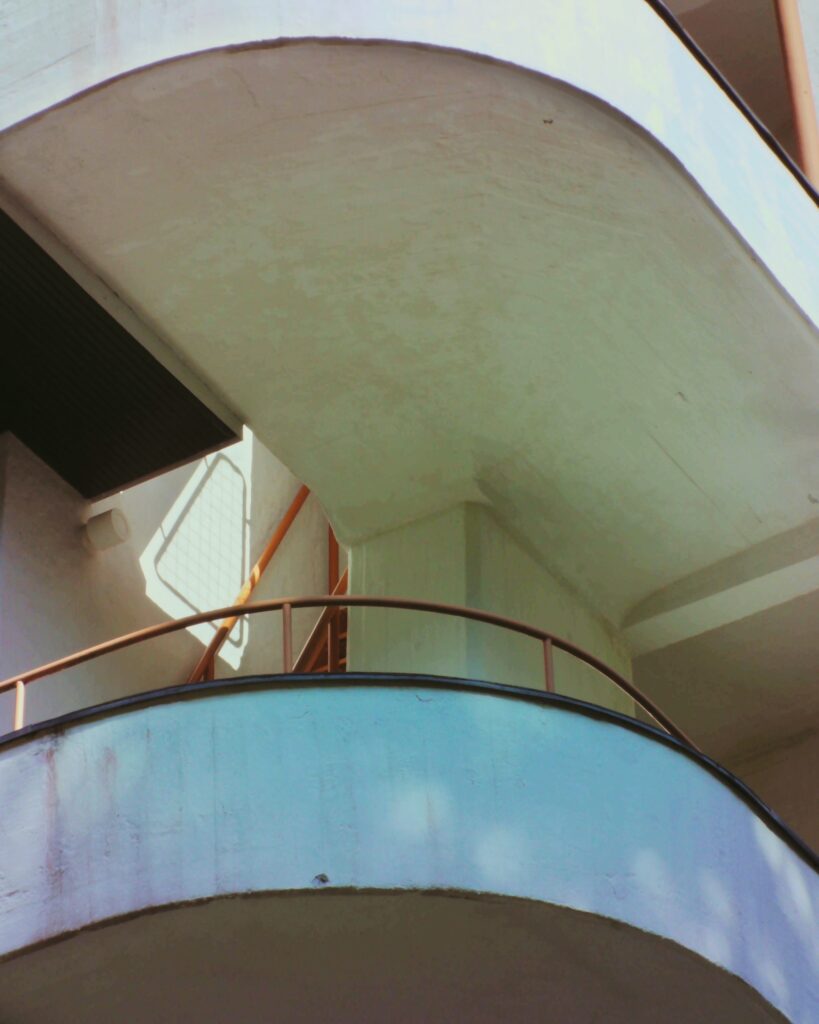In Summer 2024, the Paimio Sanatorium Foundation offers a unique, three-week residency for artists across various fields, including architecture, design, visual arts, performing arts, music, literature, writing, film, and curating. Selected participants will work and live in the modern architectural masterpiece by Alvar and Aino Aalto for three weeks.
In August we are joined by Belgian designer Thijs Vleeschouwer, Italian architect and photographer Federico Covre, Romanian architect Florina Pop, London-based Ivan Moshchuk and Finnish film directors Nina Forsman and Sakari Suuronen.
Meet the August residents and hear their thought about the residence.
From rubber trees to migrating birds
”I work on projects that reflect critically on architectural discourses and societal transitions, starting from conceptual thinking to be expressed in spatial interferences”, Thijs Vleeschouwer says.
Vleeschouwer is a designer based in Eindhoven, Netherlands. Currently he is studying at the Geo-Design master department, at the Design Academy Eindhoven. During the past year at the Design Academy, he has developed a strong interest in the relation between ‘natural’ (re)sources and human interventions.
”In my project “After The Party”, I conducted an investigation into the complex material background of rubber and the car tire industry, with the Hevea Brasiliensis (rubber tree) as its natural resource.”
Currently Vleeschouwer is researching the interferences of migrating birds with human interventions such as satellites. He would like to use his background in Paimio, to reflect on the specific environment and to use this environment as an experiment to continue my research.
”What speaks to me a lot, is the concept of ‘air’ in the story of the Sanatorium.”
Breathing, clean air, ventilation, … things that have been reflected upon thoroughly by the Aaltos, things that should be reflected upon in a different perspective of today’s reality.
I am a camera
Italian Federico Covre is architect and photographer, who visited Finland and Paimio Sanatorium for the first time in 2015. That was the precise moment when he decided to embark on a long journey through the architectures of the Modern Movement in Europe.
”My intention is to photograph as many representative architectures of the Modern Movement as possible and to come to a conclusion by 2029, the year in which 100 years will have passed since the construction of key buildings.”
Over the years Covre has photographed several architectures including those by Alvar Aalto, Le Corbusier, Mies van der Rohe, Bruno Taut, Figini Pollini, and Gio Ponti, just to name a few.
Covre’s ultimate goal is to revisit, through photography, an extraordinary historical moment in which architecture changes not only its language but also the way of life that still today forms the basis of contemporary architecture. Having a comprehensive archive will allow him to relate visions, projects, and places that redefine the city and architecture of the 20th century.
”In my photography I don’t want to say anything, I just want to show. And plan here is not to have a plan, just take photos.”
Strict conservation vs. harmonious adaption
”I am particularly interested in exploring how the principles of critical conservation can inform contemporary approaches to adaptation”, architect Florina Pop says.
Originally from Romania Pop works now on her PhD in Innsbruck.
Alvar and Aino Aalto’s ability to infuse their architectural designs with a profound sense of humanity has long been a source of admiration for Pop. ”Within this project’s scope, my intention is to ethnographically investigate the Sanatorium‘s capacity to adapt.” Over its nearly century-long existence, Sanatorium has undergone alterations, prompting the need to document these changes and their lingering effects.
”I aim to address the debate on whether strict conservation of its original appearance outweighs the importance of maintaining its essence through harmonious adaptation.”
She’s also excited about the potential for interdisciplinary dialogue and collaboration during the residency.
How to present classical music in era of TikTok
”My work presents a practice-led study centered on the problems of musical communication in an age dominated by the realm of visual media”, Ivan Moshchuk says.
Moshchuk is London based concert pianist currently working on his PhD thesis in Royal Academy of Music. In residency he is looking forward to get the final push to polish and conclude his work.
Today, western classical music is continuing to evolve amidst a technological revolution where audio and video production, as well as computer-generated alterations, play an inseparable role in affecting our conception, expression, and perception of both aural and visual elements of music performance.
”Furthermore, the historic ideals of capturing unaltered expression in live performance have given way to a new aesthetic of post-production.”
To explore and understand the rapidly evolving ways music is presented to audiences, Moshchuk’s research delves into the current audiovisual landscape, producing a series of film recordings that both examine and reimagine the creation of such media. His work ultimately seeks to establish a method that bridges the roles of composer, performing musician, and film director. Among his achievements is a beautifully produced multi-camera live recording of his performance of Sergey Prokofiev’s Visions Fugitives.
”Still, classical music is best like originally intended, performed live, straight to the audience.”
What it feels like to be a patient
Finnish film directors Nina Forsman and Sakari Suuronen are making a documentary film titled “Flying Death.” The film explores the social history of tuberculosis and the culture of sanatoriums.
”In the residency, we have the peace to study the space under different lighting conditions and focus on capturing small but important details as part of our film project”, says Nina Forsman.
The film specifically addresses the experience of being in a sanatorium—what was it like to be a sanatorium patient? “During the residency at Paimio, we want to simulate sanatorium life and immerse ourselves in the daily rhythm of the patients.”
While following what may seem like a monotonous daily routine with forever ongoing scheduled meals, walks and resting, Forsman and Suuronen will capture fleeting moments of sanatorium life with an 8mm film camera for their documentary.
”Both of us have personal experience with tuberculosis in our families.”
Nina’s mother, Merja, was taken directly from the maternity ward to a so called “Christmas Seal Home” as a baby. These homes were care facilities for newborns, where the babies of mothers with tuberculosis were taken for safety. Sakari’s grandfather Jaakko, died of tuberculosis in the 1950s. The small village community began to shun Jaakko’s family, fearing that they were all sick.
”Tuberculosis is a largely unspoken social history. We want to bring it to light with our film.”


